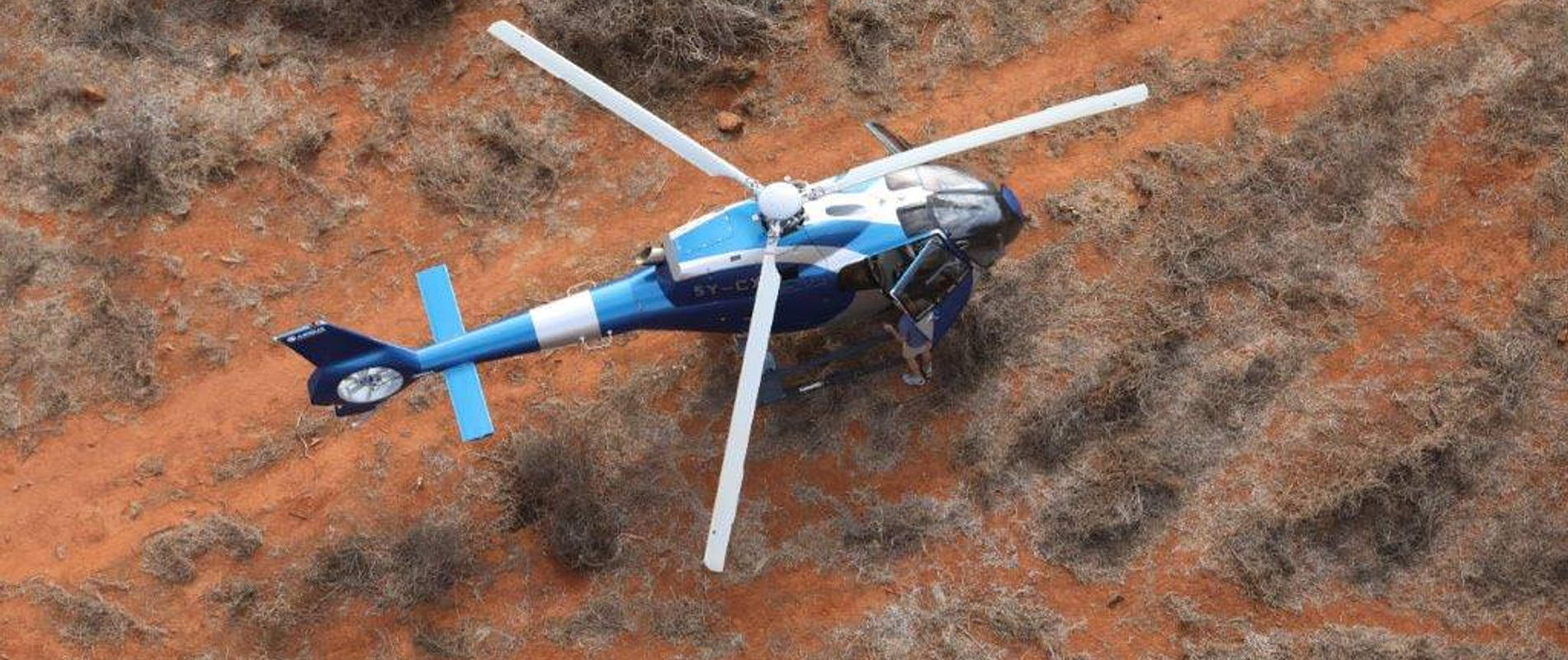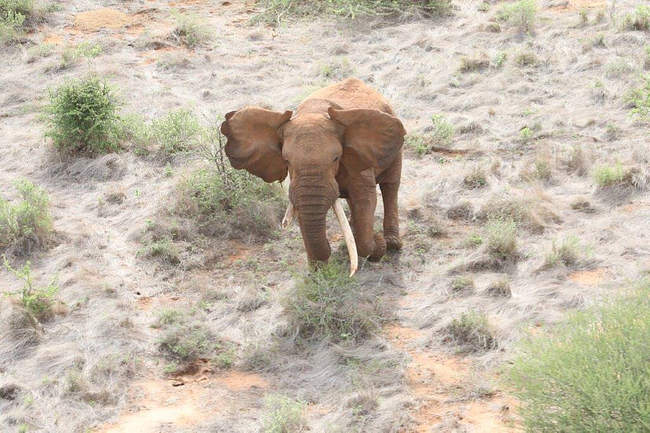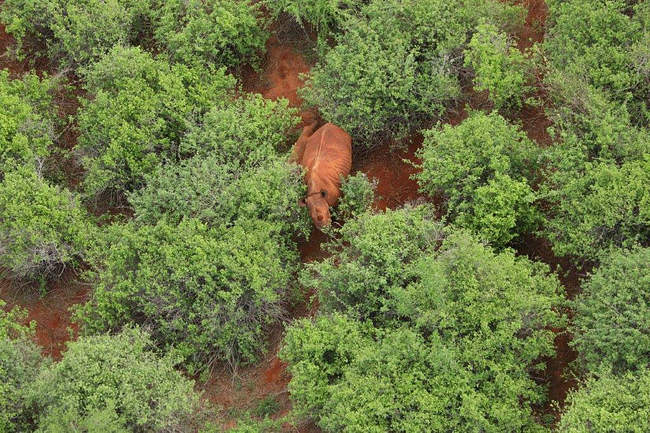The long-anticipated rains arrived in November and although one fire was observed during an aerial patrol this month, the critical areas where fires had caused a constant headache for the last three plus months were finally quenched.
The rains also brought a drop in poaching activity, as local community members returned to their farms to prepare their fields and tend to crops. The only evidence of poaching observed by aerials teams was a recent cooking fire seen during a helicopter patrol deep within the Park. No other human sign was present in the area.
Livestock migrated in large numbers to areas of the Park that received the first of the rains, including Huri Plains in Tsavo East, and the Chyulu Hills. At their peak, 15 bomas were seen as well as thousands of head of livestock and dozens of herders. Several fixed wing and helicopter patrols were conducted to first locate bomas and then either land with ground teams or access them on foot to destroy them. By the end of the month only a small number of bomas remained, and ground teams were continuing to reach the most inaccessible areas to push the herders out of the Park.
KARI Ranch was also finally rid of camel incursions in November; after initially increasing in number, the herders retreated to the north and out of the ranch as government security pressure was increased. Towards the end of the month, an aerial seed bombing run was made, dispersing over 11,000 tree seed balls over the most degraded areas of the ranch, and especially those areas where excessive charcoal burning targeted specific species of trees. Fortunately, only one charcoal kiln was observed on KARI Ranch in November. The only other charcoal burning observed in November was in South Kitui National Reserve, predominantly in the north near the Thua River.
With the rains filling seasonal water pans and manmade dams outside of the Park, wildlife moved into these areas and unfortunately cases of human-wildlife conflict increased. A Trust helicopter was called out on two occasions to push elephants back into the Park from community farmland and on another occasion to help locate a lion that had been seen in a community to the north of Tsavo East. In a tragic incident near Kasigau, a team of Wildlife Works rangers encountered an angry female elephant that, unbeknownst to the rangers, was guarding an injured calf nearby, which had been caught in a snare. The rangers scattered and one of the rangers ran in the direction of the calf, which cost him his life. A helicopter was also used to dart an elephant with a spear wound found on Kimana Sanctuary, which was also most likely the victim of human-wildlife conflict, having strayed too close to a farm bordering the Kimana Corridor. Fortunately, the treatment by the SWT/KWS Mobile Veterinary Unit was successful and the bull is expected to make a full recovery.
One other vet treatment was conducted with assistance from the SWT helicopter on Rukinga Ranch. This was in fact a re-treatment of a bull that had a suspected arrow wound on his front leg. The treatment was completed without incident, however, at the time the elephant was given a guarded prognosis for recovery. One elephant carcass was discovered, by helicopter, atop the Yatta Plateau, but is thought to have died of natural causes. Both tusks were recovered.

The highlight of November was undoubtedly the end of months of dust and smoke and the return of the seasonal, Tsavo jungle. The trade-off is that sightings of charismatic cats and dogs are much more difficult to achieve under the dense vegetation. Only one leopard and a pair of lions were seen in November, both on the same patrol flight.




